LED ceiling lights are a popular choice for modern lighting solutions in homes and offices.
We will explore what LED ceiling lights are, how they work, and the advantages they offer over traditional lighting options.
LED ceiling lights offer benefits like energy efficiency, durability, and versatility. However, there are disadvantages to consider, such as a higher initial cost and limited color temperature options.
We will compare LED ceiling lights to other types of lighting and discuss their suitability for different rooms.
If you are considering upgrading your lighting, read on to learn more about what to consider when choosing LED ceiling lights.
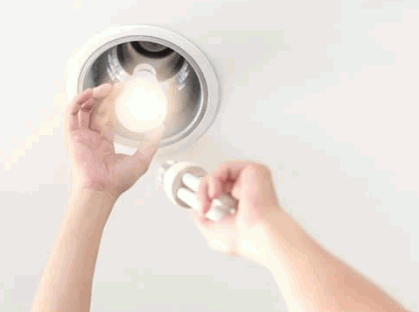
What Are LED Ceiling Lights?
LED ceiling lights are modern light fixtures that offer efficient and versatile lighting solutions for various spaces.
Plus their energy efficiency and LED ceiling lights come in a wide range of design options to suit different interior styles. From sleek and minimalistic designs to more elaborate fixtures, there are choices to complement any room. These lights are not just functional but also add a touch of contemporary elegance to the space.
- LED ceiling lights are commonly used in bedrooms to create a cozy and relaxing ambiance.
- In the kitchen, they provide bright and uniform illumination for cooking and dining activities.
- In the bathroom, these lights offer a clean and refreshing lighting effect, perfect for grooming routines.
- In the dining room, LED ceiling lights can enhance the overall atmosphere and highlight the dining area.
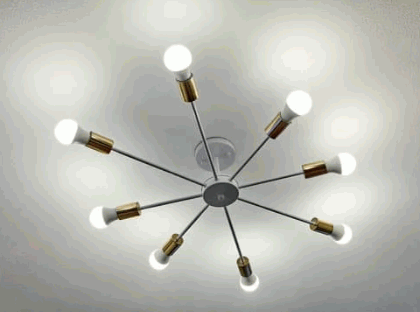
How Do LED Ceiling Lights Work?
LED ceiling lights operate by utilizing light-emitting diodes to produce illumination efficiently and effectively.
LEDs convert electrical energy into light through a process called electroluminescence, where electrons pass through a semiconductor material and release energy in the form of photons. This method is highly efficient, as it generates minimal heat compared to traditional lighting sources like incandescent bulbs. This efficiency not only reduces energy consumption but also contributes to the longevity of LED lights, making them durable and long-lasting.
LED ceiling lights come in a variety of Kelvin-level options, offering users the flexibility to choose between daylight 6000K for a bright, energizing atmosphere or warm white for a cozy, inviting ambiance. This versatility makes LED ceiling lights a popular choice for smart home technology integration, allowing users to control lighting settings remotely or through voice commands, enhancing convenience and energy savings.
Explore further: How To Install Retrofit LED Recessed Lighting
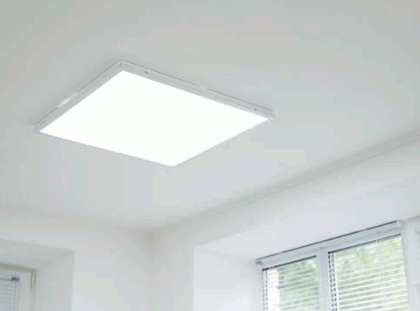
What Are The Advantages Of LED Ceiling Lights?
LED ceiling lights offer numerous advantages, including energy efficiency, long lifespan, versatile designs, and a sleek appearance.
One of the key benefits of LED ceiling lights is their energy efficiency, which leads to lower electricity bills and reduced environmental impact. The long lifespan of LEDs means less frequent replacements, saving you time and money in the long run.
Their versatile designs can complement any interior style while providing excellent directional lighting for specific areas. Integrated LEDs in high-quality fixtures ensure optimal performance and reliability, offering a sustainable lighting solution.
The environmentally friendly manufacturing process of LED lights contributes to a greener environment, making them a responsible choice for eco-conscious consumers.
Energy Efficiency
One of the key advantages of LED ceiling lights is their exceptional energy efficiency, resulting in significant energy savings over time.
LED ceiling lights have gained popularity for their low power consumption compared to traditional lighting options. Due to their efficient use of electricity, these fixtures can help to reduce electricity bills substantially. People are increasingly transitioning from CFL bulbs to LED options to benefit from improved efficiency and cost savings.
Not only do LED lights save energy, but they also have a longer lifespan, further reducing the need for frequent replacements. This transition reflects a growing awareness of the importance of environmental sustainability through energy-efficient practices.
Long Lifespan
LED ceiling lights boast an impressive long lifespan, outlasting traditional light bulbs by a significant margin.
One of the key advantages of the longevity of LED ceiling lights is their reduced maintenance requirements. With their extended lifespan, these lights require fewer replacements compared to traditional bulbs, resulting in lower maintenance costs over time. This not only saves money but also reduces the hassle of constantly changing bulbs. Their durability makes them a cost-effective lighting solution in the long run.
Regarding enhancing durability, recessed LED and linear recessed lights are top contenders. Their sleek design not only adds a modern touch to any space but also contributes to their longevity, making them a smart choice for both residential and commercial lighting needs.
Durability
LED ceiling lights are highly durable and do not contain hazardous materials found in traditional light bulbs, ensuring a safe and long-lasting lighting solution.
LED ceiling lights, with their robust construction, are designed to withstand impacts and vibrations better than conventional lighting options, making them ideal for environments where durability is paramount. This resilience not only reduces the need for frequent replacements but also enhances safety by minimizing the risk of breakage and potential hazards. As these fixtures are free of mercury, they pose no threat to health or the environment, offering a sustainable and eco-friendly lighting choice.
Versatility
LED ceiling lights offer versatility in terms of design and placement, making them suitable for various ceiling room configurations and fixture options.
Whether it's a traditional flat ceiling, vaulted ceiling, sloped ceiling, or even a drop ceiling, LED ceiling lights can be effortlessly incorporated into the design to enhance the ambiance of the space.
- Regarding fixtures, from recessed lights to flush mounts and pendant lights, LED technology offers a wide array of options to cater to different styles and preferences.
- The directional flexibility of LED lights allows for customizing the lighting layout in a room with varying furniture arrangements and decor themes.
Environmental Friendliness
LED ceiling lights are environmentally friendly due to their ecologically sensitive manufacturing process that minimizes the impact on the environment.
Manufacturers of LED ceiling lights prioritize sustainability by using materials that are less harmful to the environment compared to traditional light sources. The energy-efficient operation of LED lights not only reduces electricity consumption but also lowers greenhouse gas emissions, contributing to a greener planet.
The recyclability of LED ceiling lights allows for the proper disposal and reuse of components, further minimizing waste and promoting a circular economy. This shift towards LED technology signifies a significant step in the lighting industry toward a more sustainable and eco-conscious future.
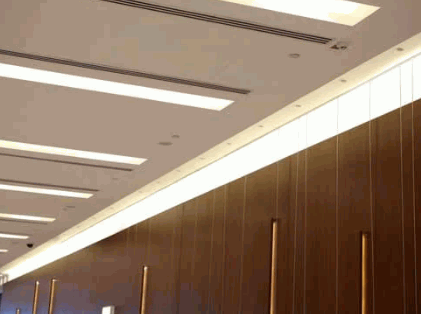
What Are The Disadvantages Of LED Ceiling Lights?
While LED ceiling lights offer numerous benefits, they come with certain disadvantages such as a higher initial cost, limited color temperature options, and the potential for being overly bright.
One of the main drawbacks of LED ceiling lights is the higher upfront expenses associated with their installation and purchase. Although LED technology is energy-efficient in the long run, the initial investment can sometimes deter homeowners looking for more budget-friendly options.
Another limitation of LED ceiling lights is the restricted range of color temperature choices available. This can pose a challenge when trying to achieve a specific ambiance or lighting effect in a room, as LED lights may not always offer the warm or cool tones desired.
To address issues such as overly bright illumination, proper dimming options become essential. Without adequate dimming capabilities, LED ceiling lights may provide harsh lighting that can be uncomfortable for certain activities or spaces.
Higher Initial Cost
One drawback of LED ceiling lights is their higher initial cost compared to traditional lighting options, although this investment is often offset by long-term energy savings.
When considering the cost implications, it's important to acknowledge that while the upfront expense of installing LED ceiling lights may be more significant, the potential for saving on energy bills over time can be substantial. The initial investment required for LED fixtures might be higher than traditional options, but the efficiency and longevity that they offer can result in a favorable payback period in the long run. It's this shift towards LED lighting that has driven many consumers and businesses to embrace the technology, recognizing the potential for significant savings and environmental benefits.
Limited Color Temperature Options
Some LED ceiling lights may have limited color temperature options, restricting the ability to achieve specific lighting ambiance preferences.
Choosing the right color temperature for your LED ceiling lights plays a vital role in enhancing the overall ambiance of a room. The color temperature, measured in Kelvins, determines whether the light emitted is warm or cool, affecting the mood and aesthetics of the space. For example, a lower Kelvin level (2700K-3000K) creates a warm and cozy atmosphere, ideal for living rooms or bedrooms, while a higher Kelvin level (4000K-5000K) produces a cooler, more energizing light suitable for workspaces or kitchens.
Can Be Overly Bright
LED ceiling lights have the potential to be overly bright in certain settings, underscoring the importance of incorporating dimmability features for adjustable illumination.
Having the ability to control brightness is essential when it comes to lighting, especially in spaces where a softer, more ambient setting is desired. Dimmable LED fixtures offer a convenient solution, allowing users to easily adjust the light intensity to suit their needs. This versatility not only enhances the overall atmosphere of a room but also provides practical benefits such as reducing eye strain and energy consumption. With dimmable LEDs, you have the flexibility to create the perfect lighting environment for any occasion, from cozy evenings to productive work sessions.
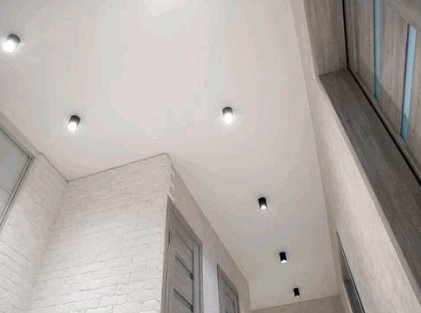
How Do LED Ceiling Lights Compare To Other Types Of Lighting?
LED ceiling lights differ from other types of lighting such as incandescent, fluorescent, and halogen lights in terms of energy efficiency, lifespan, and lighting quality.
One of the standout advantages of LED ceiling lights over traditional lighting options is their exceptional energy efficiency. LEDs consume significantly less energy, translating to lower electricity bills and reduced environmental impact. These lights have an impressive lifespan, lasting much longer than incandescent, fluorescent, or halogen lights.
Plus their efficiency and longevity, LED fixtures also excel in terms of lighting performance. They offer superior brightness, color consistency, and versatility compared to their traditional counterparts, making them a preferred choice for modern lighting solutions.
Incandescent Lights
Compared to incandescent lights, LED ceiling lights consume significantly less energy, last longer, and provide superior lighting quality.
Plus these benefits, LED ceiling lights are also environmentally friendly, producing less heat and containing no harmful substances such as mercury. This makes them a safer and healthier choice for both the environment and human health. The shift towards energy-efficient lighting solutions, including the widespread adoption of LED technology, reflects a growing awareness of the importance of sustainability and energy conservation in today's world.
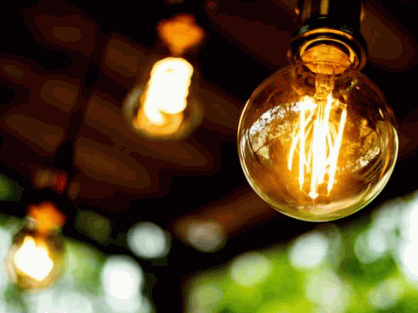
Fluorescent Lights
LED ceiling lights outperform fluorescent lights in terms of energy efficiency, durability, and the absence of hazardous materials like mercury.
LED fixtures are known for their longevity, often lasting up to ten times longer than traditional fluorescent bulbs. This extended lifespan not only reduces the frequency of replacements but also contributes to energy conservation by cutting down on manufacturing and disposal of waste.
Unlike fluorescent lighting, which can flicker or hum, LED lights provide consistent and safe illumination without any noticeable noise or harmful UV emissions. This feature makes them ideal for spaces where continuous, reliable lighting is crucial, such as hospitals, schools, or offices.
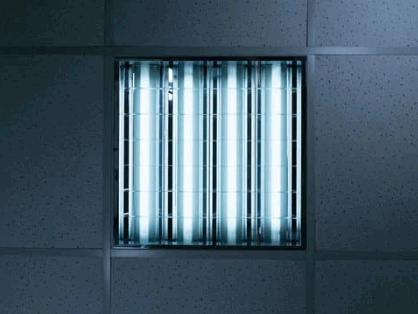
Halogen Lights
Compared to halogen lights, LED ceiling lights offer superior energy efficiency, longer lifespans, and enhanced lighting control options.
LED ceiling lights are known for consuming significantly less energy than halogen lights, resulting in reduced electricity bills and environmental impact. Their extended durability means less maintenance and replacement costs over time, making them a cost-effective lighting solution.
The versatility of LED fixtures allows for precise directional lighting, perfect for highlighting specific areas or creating various ambiance in a room. This added control over the direction and intensity of light enhances design possibilities and functionality.
Transitioning to LED technology not only provides better lighting experiences but also contributes to a more sustainable and eco-friendly lifestyle. With their energy-saving features, long-lasting performance, and versatile applications, LED ceiling lights are a superior choice for modern lighting needs.
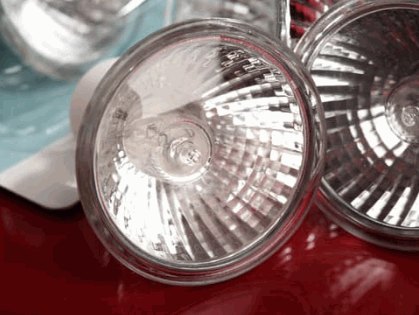
Are LED Ceiling Lights Suitable For All Rooms?
LED ceiling lights are suitable for various rooms including the living room, bedroom, kitchen, and bathroom, offering tailored lighting solutions for each space.
LED ceiling lights can create a cozy and relaxing ambiance in the bedroom, perfect for winding down at the end of the day.
In the kitchen, bright and focused LED lighting can increase visibility when preparing meals and add a modern touch to the space.
For bathrooms, choosing LED ceiling lights with a high color rendering index (CRI) can ensure an accurate reflection of skin tones for tasks like grooming.
In dining rooms, the use of integrated LEDs can provide a sophisticated and stylish look, enhancing the overall dining experience.
Living Room
LED ceiling lights in the living room can create a cozy ambiance with the option of using multiple fixtures for layered lighting effects.
These lights are not only energy-efficient but also offer a stylish and modern touch to any space. By strategically placing LED ceiling lights, you can highlight specific areas in the living room, such as artwork, seating areas, or architectural features.
The versatility of dimmable LED fixtures allows you to adjust the light intensity according to different activities or moods, providing flexibility and control over the atmosphere.
The long lifespan of LED lights ensures that you won't have to worry about frequent replacements, making them a practical and cost-effective lighting solution for your living room.
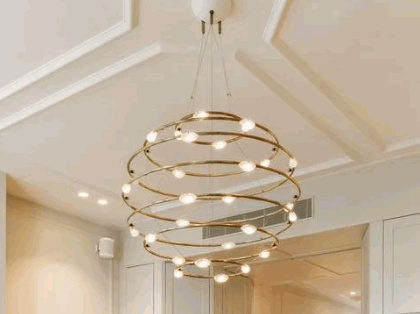
Bedroom
In bedrooms, LED ceiling lights can provide soft and soothing illumination, complemented by wall lights for additional accent lighting.
LED ceiling lights are a popular choice for bedrooms due to their ability to create a relaxing ambiance perfect for unwinding after a long day. The soft lighting emitted by these fixtures helps in setting a cozy and inviting atmosphere, ideal for promoting relaxation and restful sleep.
When paired with wall lights, the combination offers a versatile lighting solution. Wall lights can be positioned strategically for task lighting such as reading in bed or getting dressed, enhancing the functionality of the bedroom space while adding a touch of style and sophistication.
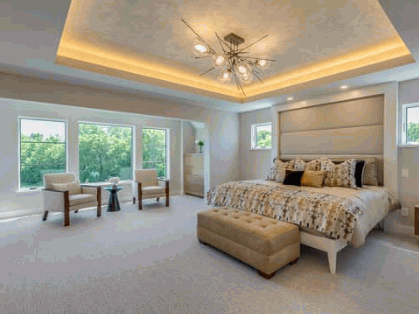
Kitchen
LED ceiling lights in the kitchen offer bright and focused lighting, with the option of using recessed luminaires for sleek and modern design aesthetics.
These efficient lighting fixtures are ideal for enhancing visibility and creating an inviting atmosphere in the kitchen. The LED technology not only provides ample illumination for cooking tasks but also helps in reducing energy consumption and maintenance costs.
By opting for recessed luminaires, homeowners can achieve a clutter-free look while maximizing space utilization. The seamless integration of these lights into the ceiling creates a clean and contemporary aesthetic that complements various kitchen styles.
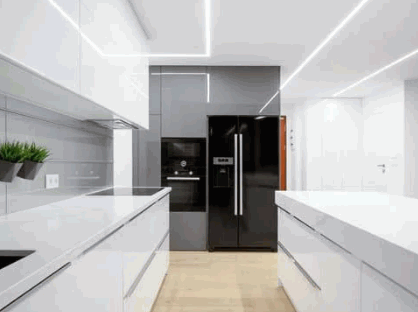
Bathroom
LED ceiling lights in the bathroom provide efficient and directional lighting for grooming tasks, ensuring optimal visibility and aesthetics.
By incorporating integrated LEDs in vanity lighting fixtures and mirrors, individuals can benefit from enhanced functionality and style. These modern lighting solutions not only brighten up the space but also offer a more focused and flattering illumination for tasks such as applying makeup or shaving. The sleek and contemporary design of LED fixtures adds a touch of sophistication to the bathroom decor, elevating the overall ambiance of the room. The versatility of LED lighting allows for customization in color temperature and brightness levels, catering to individual preferences and needs.
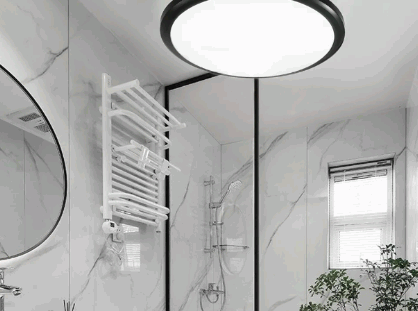
What To Consider When Choosing LED Ceiling Lights?
When selecting LED ceiling lights, factors to consider include brightness levels, color temperature options, fixture size, design aesthetics, dimming capabilities, and energy efficiency ratings.
Optimal brightness levels play a crucial role in different rooms; for example, brighter lights are suitable for kitchens and workspaces, while softer lighting might be more relaxing in bedrooms or living rooms. Color temperature choices, ranging from warm to cool hues, can create varying ambiance and moods. The design aesthetics of the light fixture should complement the room's style and layout. Don't overlook the importance of dimmability, as it offers flexibility in adjusting the light intensity based on the occasion or time of day. Considering energy efficiency ratings is also essential for sustainable lighting choices, helping you save on electricity costs in the long run.
Brightness
Selecting the right brightness level for LED ceiling lights is crucial to ensure adequate illumination without causing glare or discomfort.
Proper brightness selection not only enhances the aesthetics of a room but also plays a vital role in creating the desired ambiance for different activities. For instance, a bright, well-lit kitchen may benefit from higher-intensity lighting to assist in food preparation, while a cozy living room might require softer lighting for relaxation.
Depending on the room size, functional use, and personal preferences, users can opt for directional lighting options to achieve focused illumination where needed. This not only reduces energy wastage by avoiding over-lighting but also adds versatility to cater to specific tasks or areas within a room.
Color Temperature
The color temperature of LED ceiling lights plays a significant role in establishing the desired ambiance and visual comfort within a space.
Color temperature, measured in Kelvin, dictates whether a light appears warm or cool. For instance, warm white LEDs emit a cozy, inviting glow perfect for living areas or bedrooms, creating a welcoming environment. On the other hand, daylight LEDs produce a crisp, energizing light ideal for workspaces like kitchens or home offices, enhancing focus and productivity. It is essential to consider the intended purpose of a room when selecting the appropriate color temperature to set the right mood and ambiance.
Size And Design
Choosing the right size and design of LED ceiling lights can enhance the aesthetic appeal of a room while offering modern alternatives to traditional light bulb fixtures.
Regarding selecting LED ceiling lights, it is essential to consider the size in relation to the room's dimensions. Correctly sized fixtures ensure proper illumination and prevent overwhelming or underwhelming lighting effects. The design of the LED lights plays a crucial role in accentuating the room's style and décor. Matching the design of the lights with the overall aesthetic can create a harmonious atmosphere that elevates the space.
Dimmability
LED ceiling lights with dimmability features offer adjustable lighting options, allowing users to customize brightness levels according to their preferences and needs.
By having the ability to adjust the brightness, dimmable LED ceiling lights enable individuals to effortlessly create various lighting moods for different occasions. Whether it's a bright, well-lit space for productivity during the day or a warm, cozy ambiance for relaxation in the evening, these lights deliver versatility in ambiance control.
Energy Efficiency Rating
Considering the energy efficiency rating of LED ceiling lights is essential to make informed choices for sustainable lighting solutions that reduce electricity consumption.
Not all LED ceiling lights are created equal; the energy efficiency rating, often denoted by the Energy Star certification, indicates how much energy is converted into light rather than wasted as heat. Opting for high-rated fixtures can lead to substantial energy savings over time, not to mention the positive impact on the environment by reducing carbon emissions.
By choosing energy-efficient LED lights, homeowners can enjoy long-term cost benefits through lower electricity bills and less frequent replacement. Embracing these eco-friendly lighting options is a small yet impactful way to contribute to a greener future for all.
